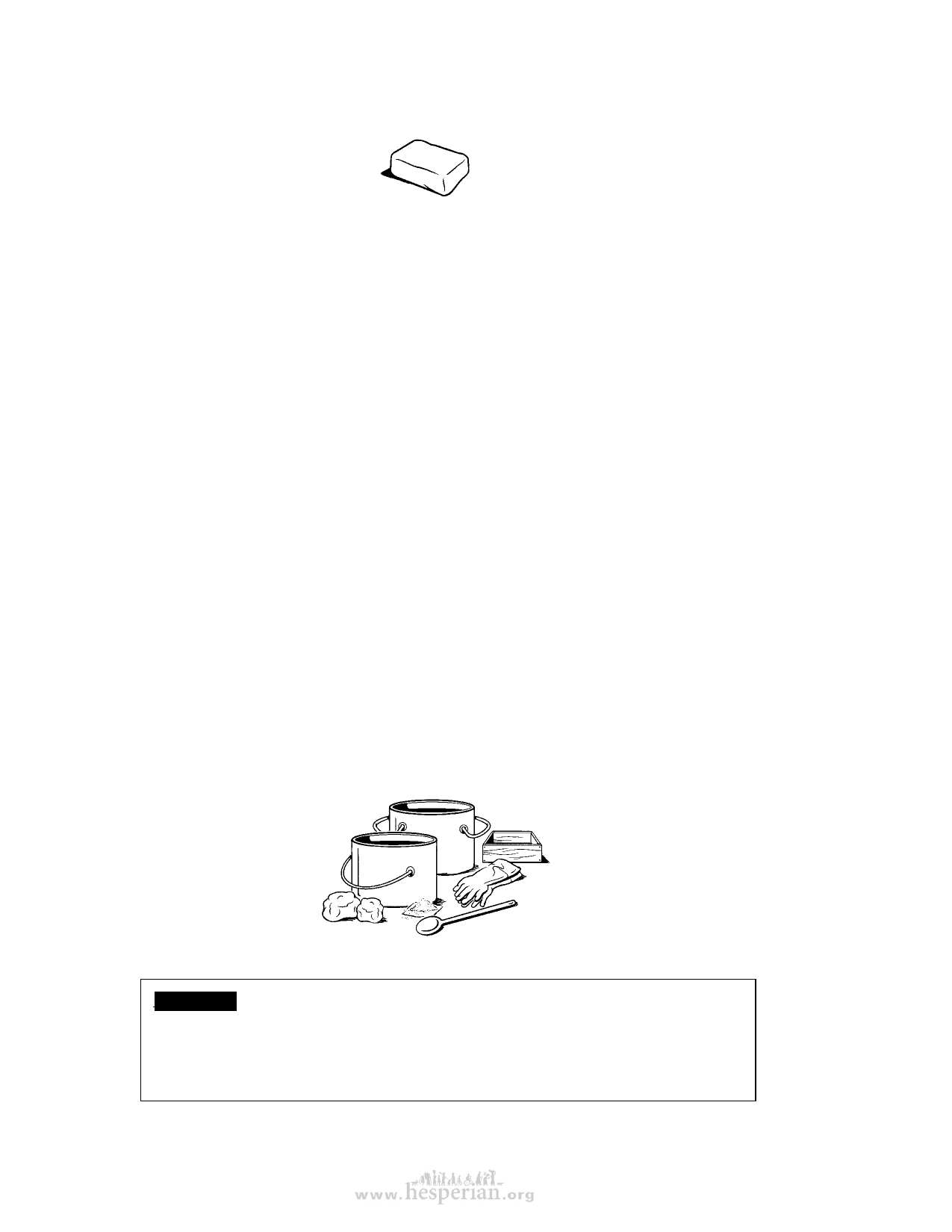
14 Sanitation and Cleanliness for a Healthy Environment
How to make soap
Basic ingredients
To make 4 kilos of soap you will need:
• Oil or fat — 3 liters (13 cups) of oil or 2.75 kilos (6 pounds) of hard fat. Different
oils and fats will give different results. The best way to know what fat or oil to
use is to experiment with what is available.
• Lye — 370 grams (13 ounces). Lye is also called caustic soda or sodium
hydroxide.
• Water — 1.2 liters (5 cups). It must be “soft” water, such as rain or spring water.
To “soften” hard water (well or river water), add ¼ teaspoon of lye for each liter
of water. Stir and let sit for a few days. Solids will sink to the bottom. Pour off
the softened water for use.
Using dirty or rancid fat
Fresh oil or fat is costly. Dirty oil or rancid fat can be used to make soap, but must be
cleaned first. To clean, melt oil or fat in an equal amount of water and bring to a boil.
Let it cool, and skim off the oil or fat. If it still smells bad, do it again with new water. If
the oil or fat has dirt in it, melt it and pour it through a fine cloth until it is clean.
Perfume
Perfume or essential oils give soap an attractive scent. For 4 kilos of soap, use one of
the following: 4 teaspoons of sassafras oil, 2 teaspoons of citronella or lavender oil,
or 1 teaspoon of clove or lemon oil. For soap that promotes healthy skin, add 1 or 2
teaspoons of oil of neem, moringa, jatropha, or baobab.
Equipment
• 2 large pots, bowls, or buckets made
of stainless steel, fired clay, or cast
iron. Do not use equipment made
from aluminum because the lye will
damage it.
• A bowl or other clean
container big enough to
hold all the fat.
• Wooden spoons or
stirring sticks.
• Measuring cups.
• An accurate weighing scale (lye is
measured by weight).
• Molds: the best molds are shallow
wooden boxes that have no
openings on the bottom or sides
but are open on the top, and can
be pulled apart gently. Molds
can also be made from small
gourds or coconut shells.
• Use cloth or waxed
paper to line the
molds so that
soap can be easily
removed.
Warning:: Lye can burn the skin and eyes. To be safe, it must combine with the
fat and set for several weeks. While making soap, wear safety glasses, long gloves,
clothes that cover the arms and legs, and closed shoes. If you get burned by lye,
wash the skin right away with cold water, then put on citrus juice or vinegar to
cool and disinfect the burn.